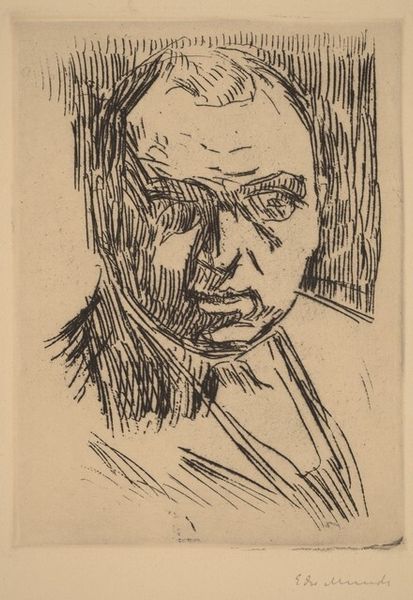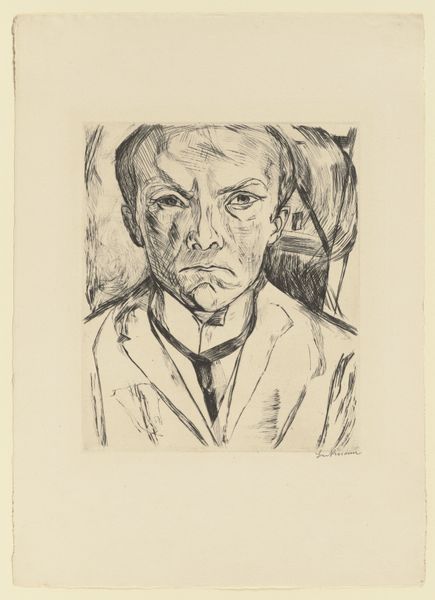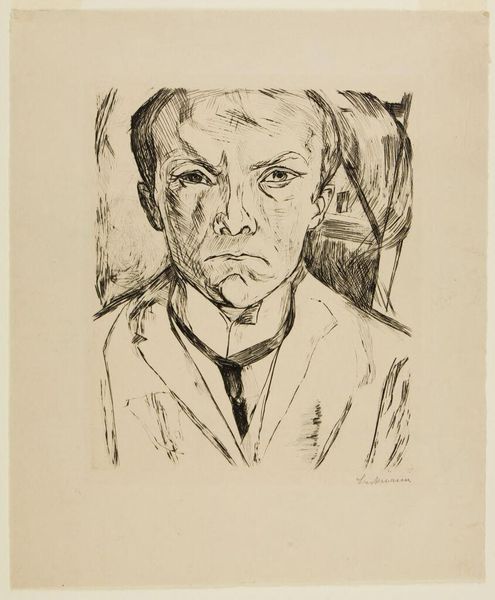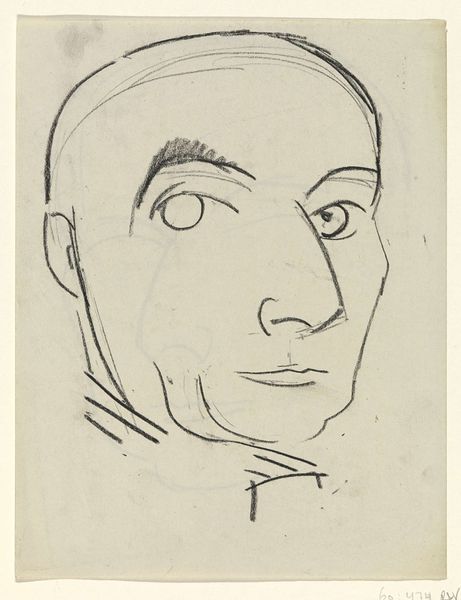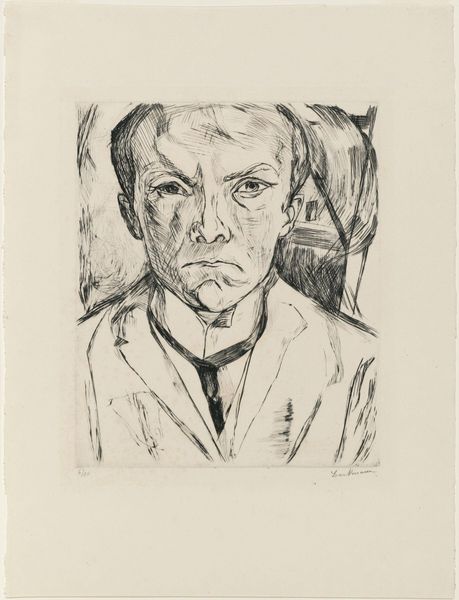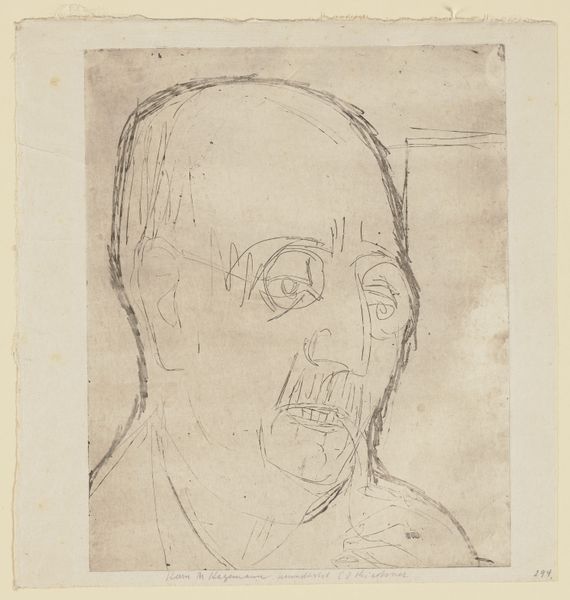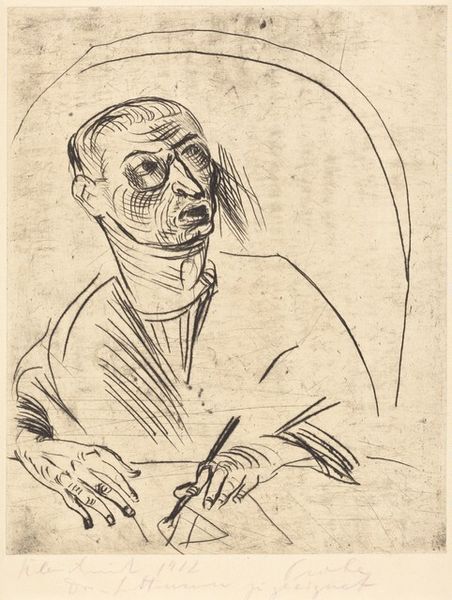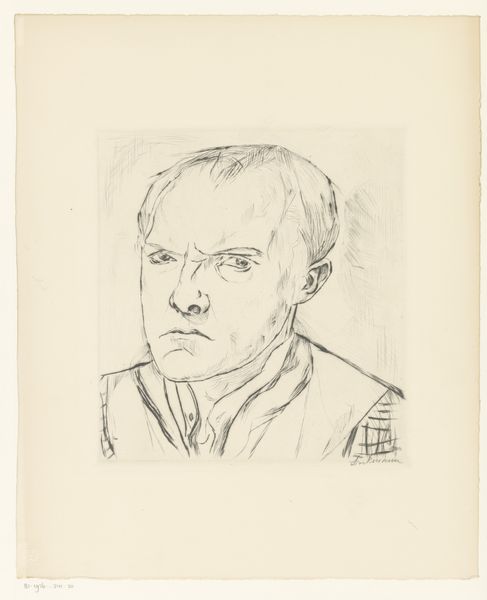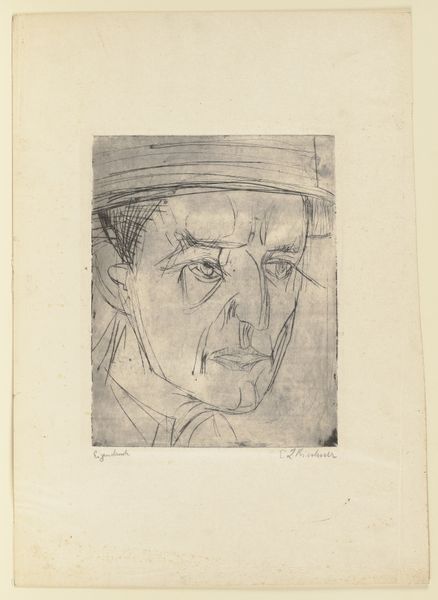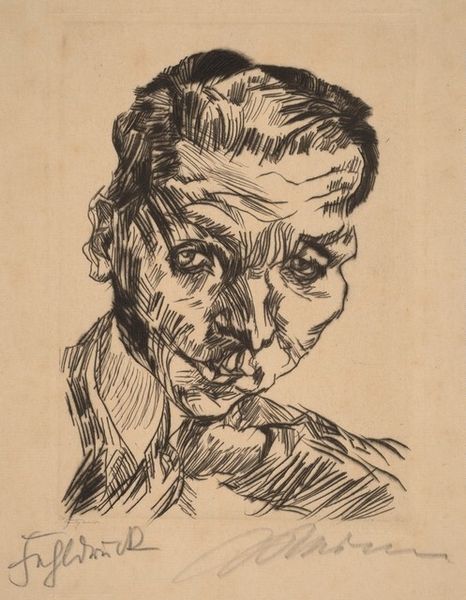
print, etching
#
portrait
#
self-portrait
# print
#
etching
#
modernism
Dimensions: sheet: 32 × 28 cm (12 5/8 × 11 in.) plate: 12 × 10 cm (4 3/4 × 3 15/16 in.)
Copyright: National Gallery of Art: CC0 1.0
Curator: Here we have Paul Gangolf’s "Self-Portrait," an etching from 1927. The delicate lines belie the intensity of the gaze. What's your initial read on this work? Editor: I'm immediately struck by the vulnerability. There's a raw, almost anxious quality. The sketchy lines give a sense of immediacy, like we’re catching a glimpse of the artist’s unfiltered self-perception during that period. Curator: The choice of etching seems crucial here. Etching has historically held certain associations of permanence but in this case there’s almost something hesitant. Notice the density of the lines around his eyes. This creates shadows that suggest a psychological depth—a soul in search. Editor: I agree. And knowing the social context of 1927 adds another layer. The Weimar Republic was teetering, and economic instability bred uncertainty. This self-portrait reflects that anxiety, doesn't it? The gaze avoids ours. It is about what is happening internally for the artist, but also Germany. Curator: Precisely! And look closely at the line quality: scratchy, uneven, with varied density. This imparts to the subject a weary humanity, but humanity, nonetheless. His gaze seems weighted with historical and emotional burden. The face seems aged. Editor: Definitely. It also raises questions about artistic representation. Self-portraits are often seen as statements of ego, but this feels almost like a deconstruction. An admission of internal turbulence or conflict during this era of modernization. Curator: I read his presentation here, though stark, as almost triumphant. He is sharing his own truth in his way, through symbols available in this etching. Editor: And perhaps it's a call for empathy? By exposing his vulnerabilities, he asks us to consider our own. What burdens do we each carry? It makes me think about the social forces acting on individuals during periods of upheaval. It brings attention to questions about social identity. Curator: It's an introspective, symbolic confrontation with the self, echoing questions about our nature through his visage, during a pivotal point in time. I'm still struck by how such minimalist lines speak volumes. Editor: I'm taking with me a greater focus on understanding what visual representation means in the age of political change. It invites reflection on themes of identity, anxiety, and the subjective self during tumultuous periods of change.
Comments
No comments
Be the first to comment and join the conversation on the ultimate creative platform.
